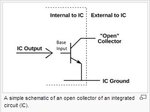venkatgandham
Junior Member level 2
I am designing a Variable reluctance sensor interface, I am taking a help from the attached circuit to design the Interface.
I have calculated the threshold values for the VR sensor interface based on the conditions I have mentioned in the attached document.
Va and Vb are the filtered signals coming from the VR sensor.
I have the following questions related to the attached circuit.
1) What is the role of R3 resistor in the positive feedback loop?
2) There is a Vbias applied to the V+ terminal of the Schmitt trigger.
3) I have calculated the V+ and V- threshold values for the Schmitt trigger and I wanted to confirm if the procedure I followed is right.
4) I took 1.4 V diodes for protecting the circuit. Does that make sense?
I appreciate your help in understanding the design.
https://obrazki.elektroda.pl/7373201200_1371359530.jpg
https://obrazki.elektroda.pl/6541857200_1371359532.jpg
For Html,

http://obrazki.elektroda.pl/7373201...oda.pl/7373201200_1371359530_thumb.jpg[/img]

I have calculated the threshold values for the VR sensor interface based on the conditions I have mentioned in the attached document.
Va and Vb are the filtered signals coming from the VR sensor.
I have the following questions related to the attached circuit.
1) What is the role of R3 resistor in the positive feedback loop?
2) There is a Vbias applied to the V+ terminal of the Schmitt trigger.
3) I have calculated the V+ and V- threshold values for the Schmitt trigger and I wanted to confirm if the procedure I followed is right.
4) I took 1.4 V diodes for protecting the circuit. Does that make sense?
I appreciate your help in understanding the design.
https://obrazki.elektroda.pl/7373201200_1371359530.jpg
https://obrazki.elektroda.pl/6541857200_1371359532.jpg
For Html,

http://obrazki.elektroda.pl/7373201...oda.pl/7373201200_1371359530_thumb.jpg[/img]

Last edited:
